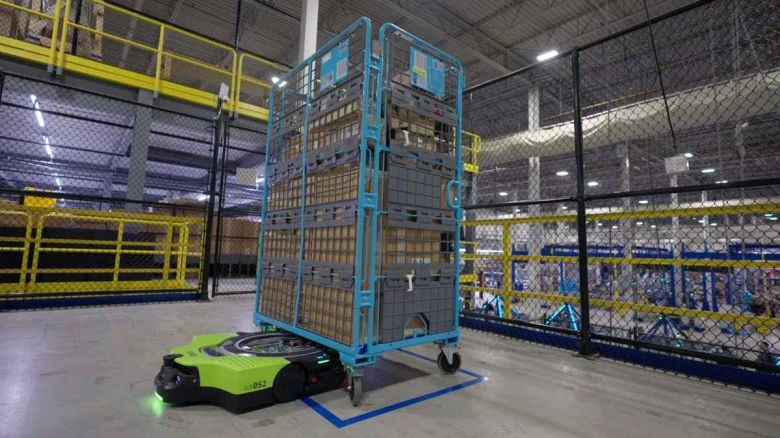In a blog post, Amazon stated that "Proteus will initially be deployed in the outgoing GoCart handling areas in our fulfilment centres and sorting centres." "Our vision is to automate GoCart handling across the network, reducing the need for people to manually move heavy objects through our facility and instead allowing them to focus on more rewarding work," the company added.
Digital
Desk: Recently, Amazon unveiled a showcase of a new robot it has been
developing. Amazon also disclosed that it presently employs over 5,20,000
robotic drive units, which collaborate with workers to create workplaces that
are safer and more productive than before. The newest technology that Amazon
has been developing and investing in is robotics, like the Proteus and the
Cardinal. Here is all you need to know about them.
The
Proteus is a fully autonomous mobile robot that can navigate Amazon facilities
by itself thanks to "superior safety, vision, and navigation technology
created by Amazon." The robot doesn't need to be kept in isolated spaces
because it was made to be used near people. This opens up a wider range of
possibilities for the Proteus to operate securely alongside workers, including
manoeuvring the GoCarts that are used to transport items across the facility.
In a blog post, Amazon stated that
"Proteus will initially be deployed in the outgoing GoCart handling areas
in our fulfilment centres and sorting centres." "Our vision is to
automate GoCart handling across the network, reducing the need for people to
manually move heavy objects through our facility and instead allowing them to
focus on more rewarding work," the company added.
Using state-of-the-art artificial
intelligence, the Cardinal robot can select a specific box from a stack, lift
it, read the label, and then precisely place it on a GoCart to send the package
on to the next leg of its journey. The robot, according to Amazon, lessens the
chance that workers will inadvertently damage themselves while handling the
lifting and turning of large, heavy objects in a confined space. Thanks to the
Cardinal's quicker sorting, it takes less time for items to be processed inside
the facility before they are sent to the appropriate addresses.
The
Cardinal will probably be deployed at fulfilment centres next year. It is
currently being tested to handle shipments weighing up to 50 pounds.
Amazon
Robotics Recognition
The
next invention from Amazon is called Amazon Robotics Identification, or AR-ID.
This AR-powered scanning system uses machine learning and computer vision to
make it easier and more efficient to scan packages inside of our facilities.
Scanning is required at each checkpoint for
Amazon's tracking system, which enables customers to follow their purchases
through every stage of the shipping process. This phase is made simpler by the
AR-ID since, with it, all employees need to do is pick up a box and place it in
the next container while it is being scanned.
The AR-ID runs at 120 frames per second and
automatically captures the product’s unique code and scans it, eliminating the
need for employees to manually find the bar code and scan it with one hand
while holding the package with the other.
Containerised
Storage System
Amazon also unveiled a new robotic system
that will allow workers to get products without having to reach up, stoop down,
or climb ladders. The new containerized storage technology makes this possible.
color:black;mso-themecolor:text1">According to Amazon, the technology is able
to identify which specific pod has a specific container. Once the pod has been
located, the system may grasp it, pull it out, and hand it to an employee. This
is made possible by "a finely coordinated dance of robotics and
software," as described by Amazon.
color:black;mso-themecolor:text1">
 color:black;mso-themecolor:text1">
color:black;mso-themecolor:text1">

 color:black;mso-themecolor:text1">
color:black;mso-themecolor:text1">
Leave A Comment